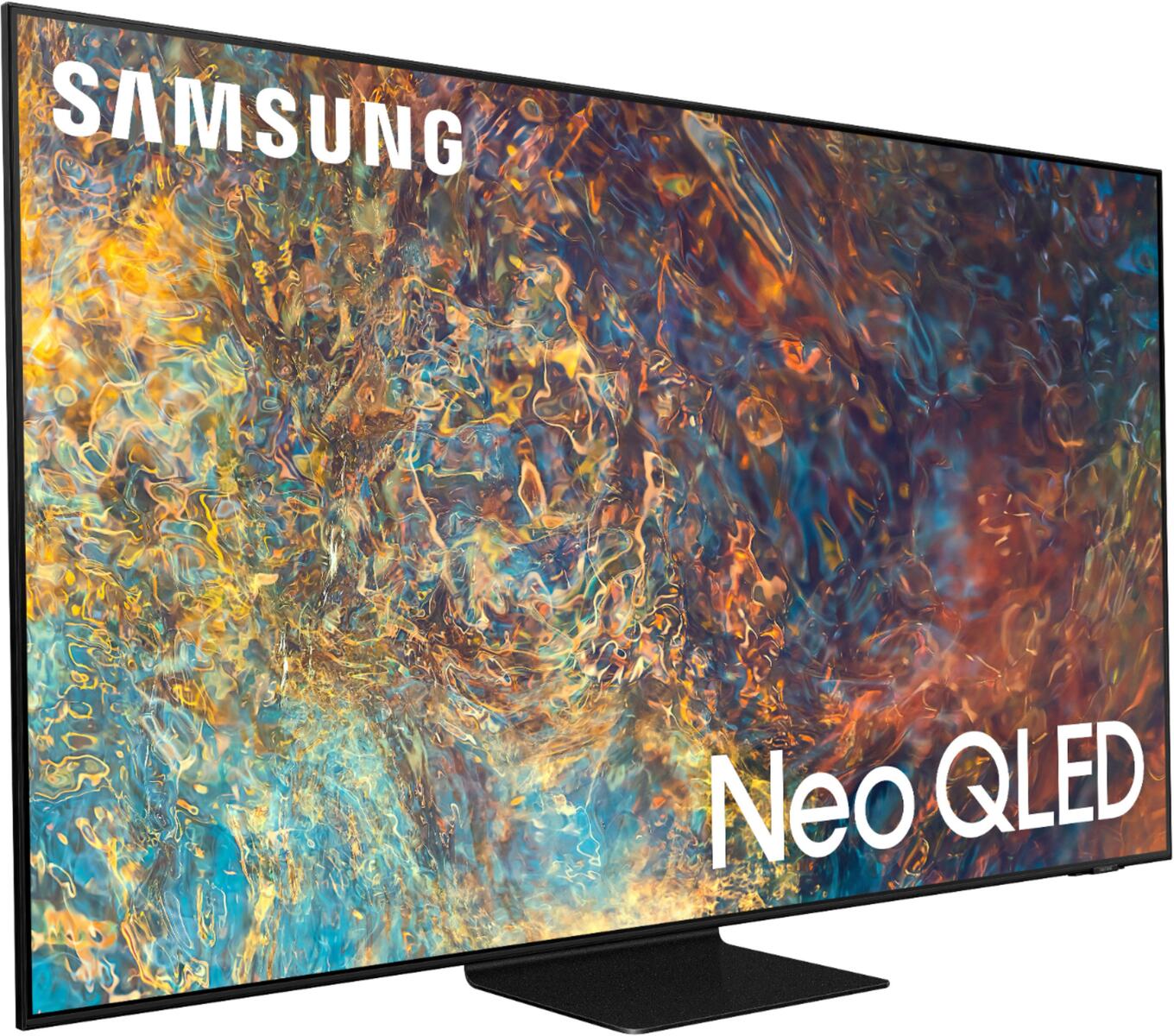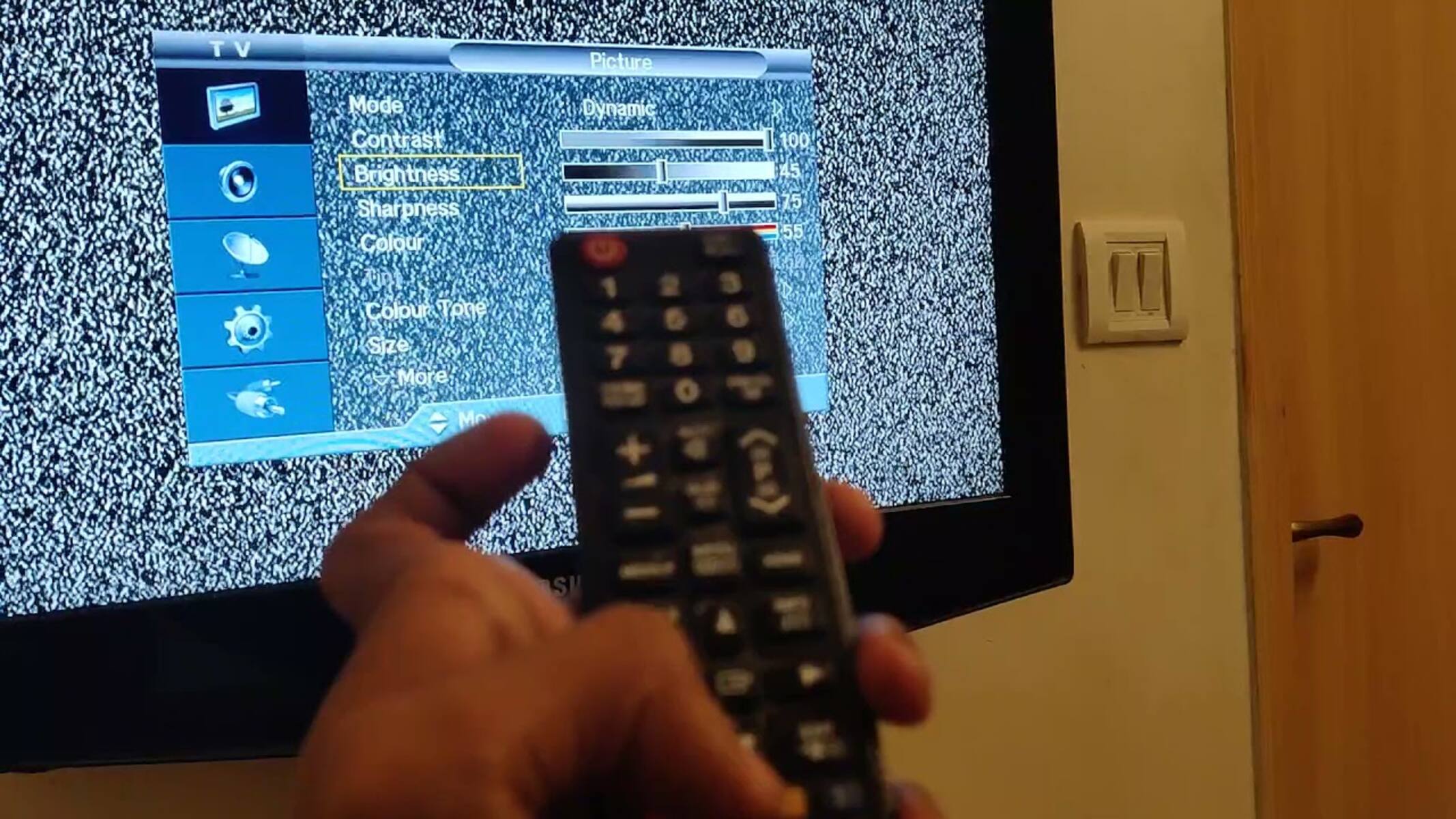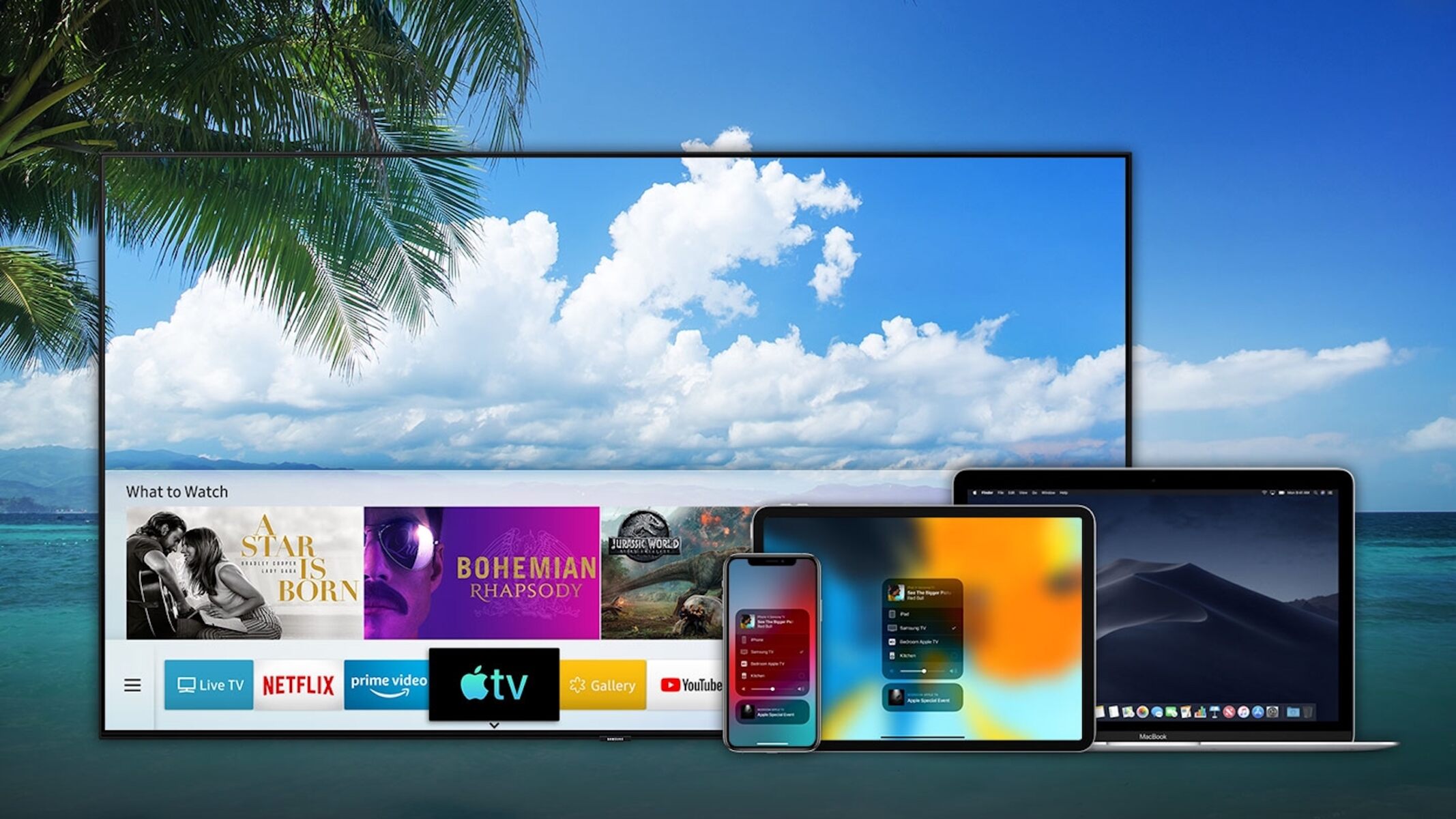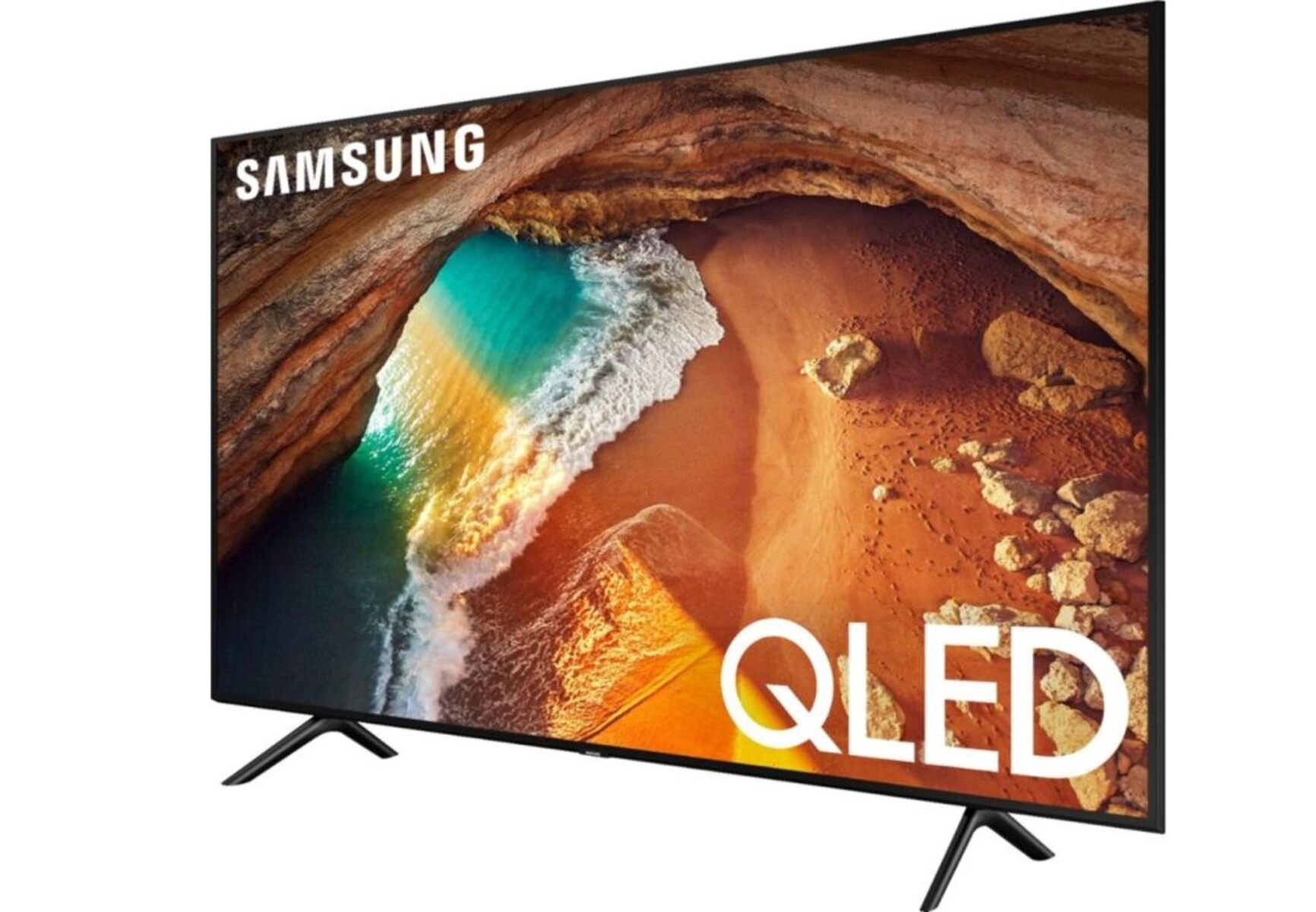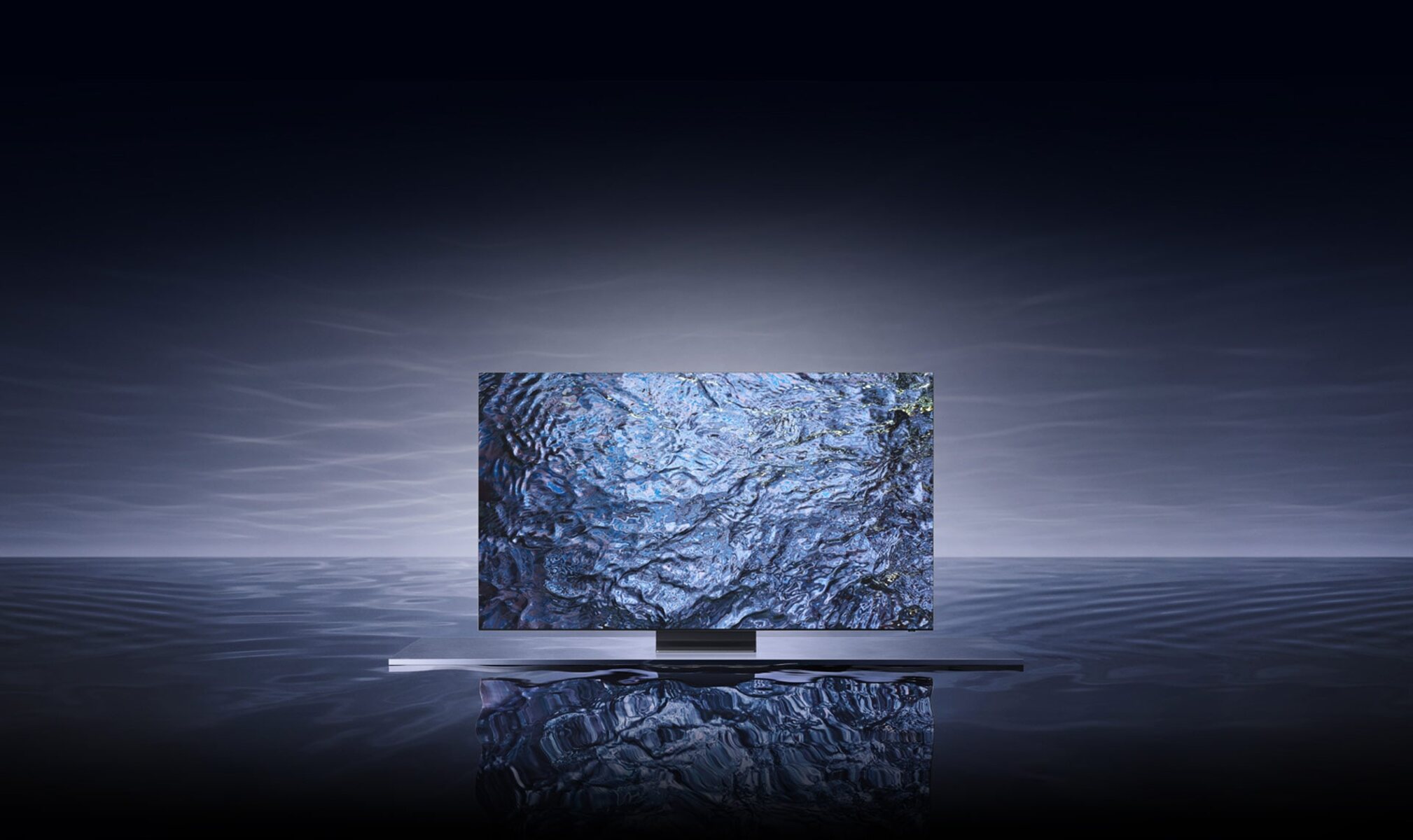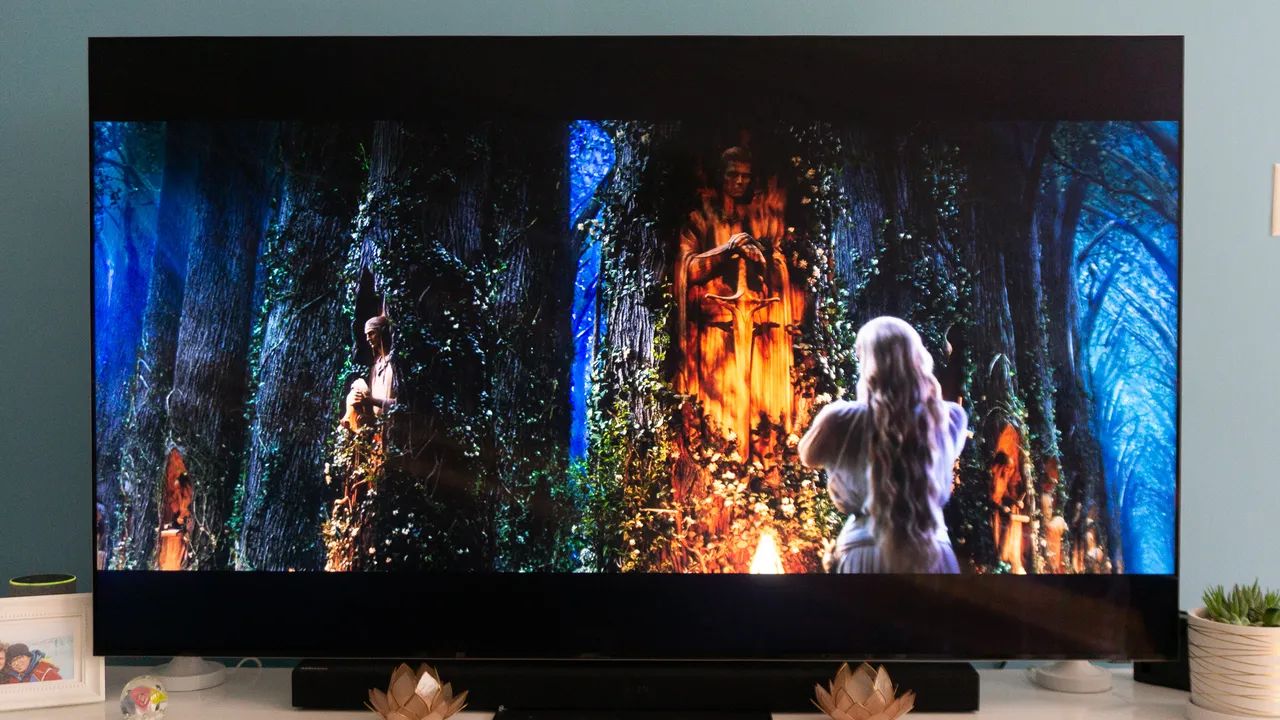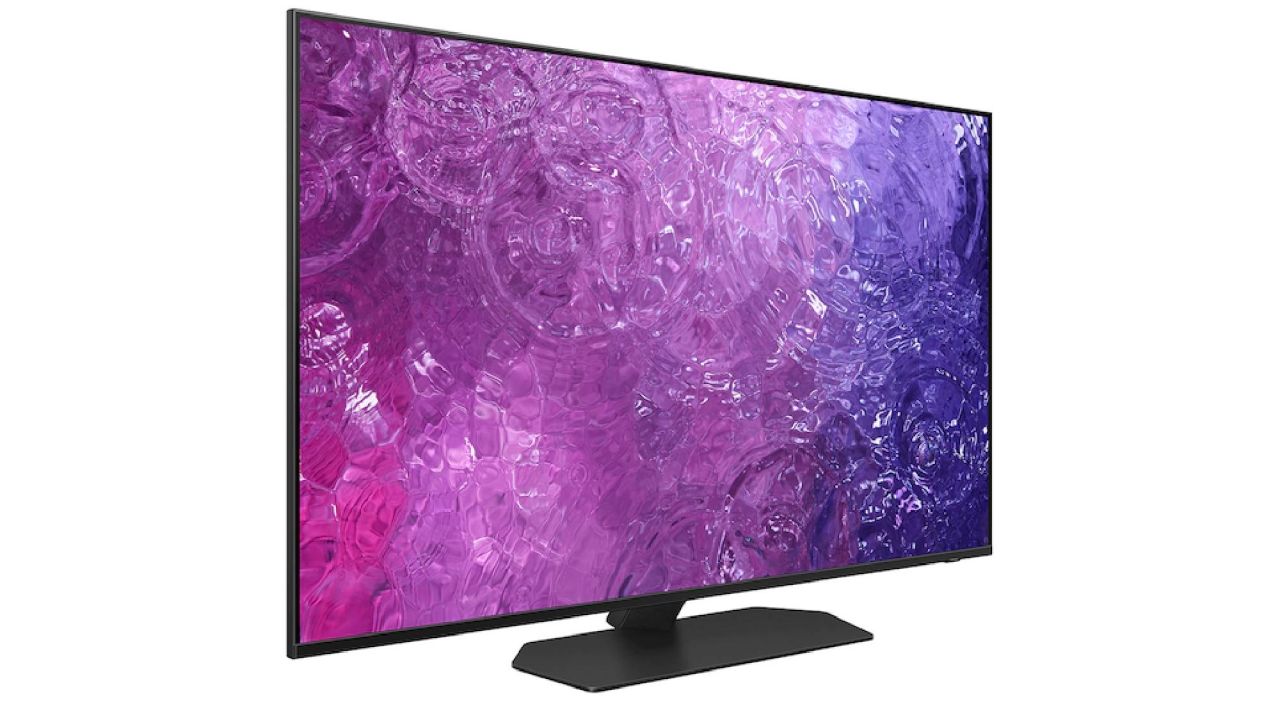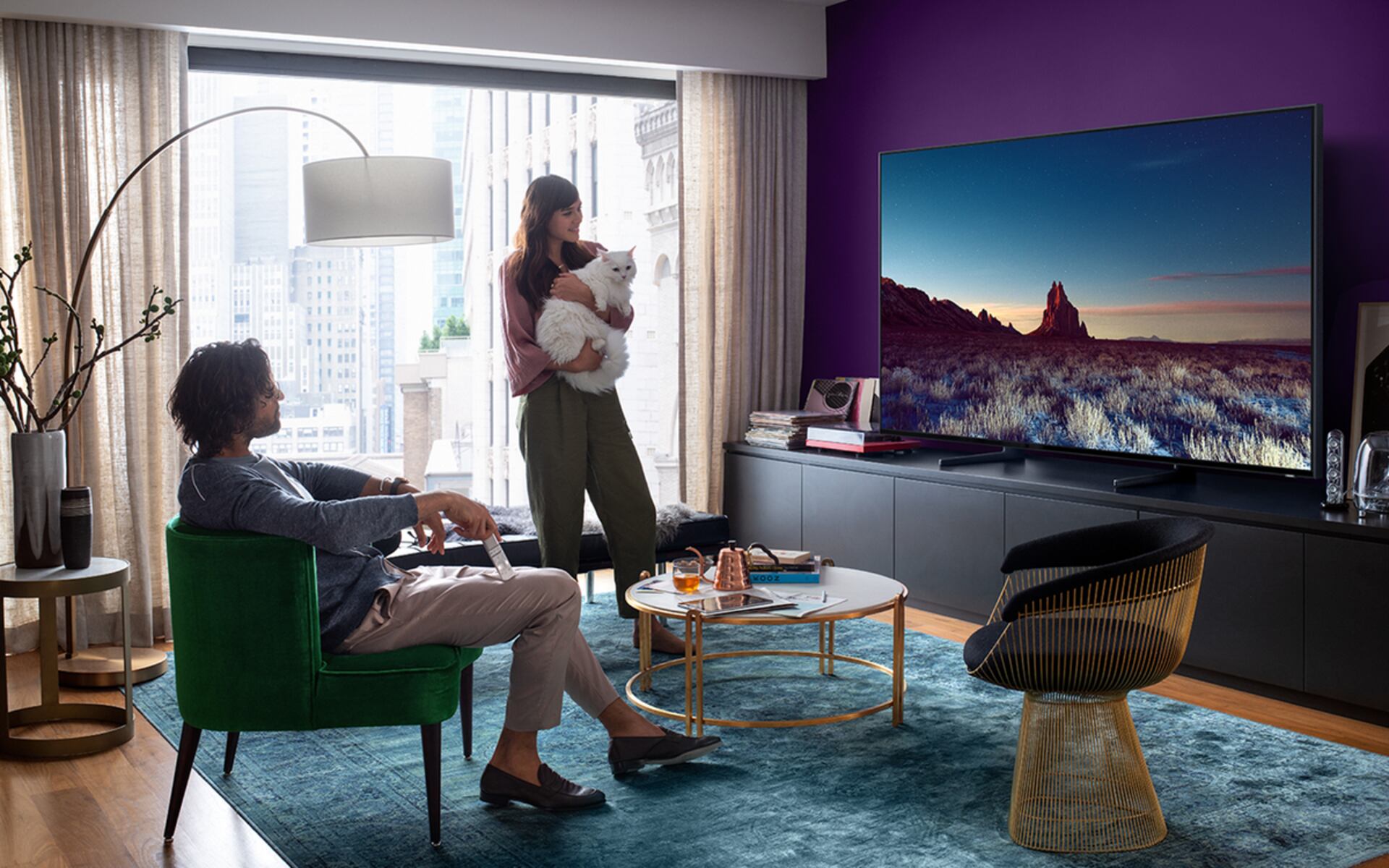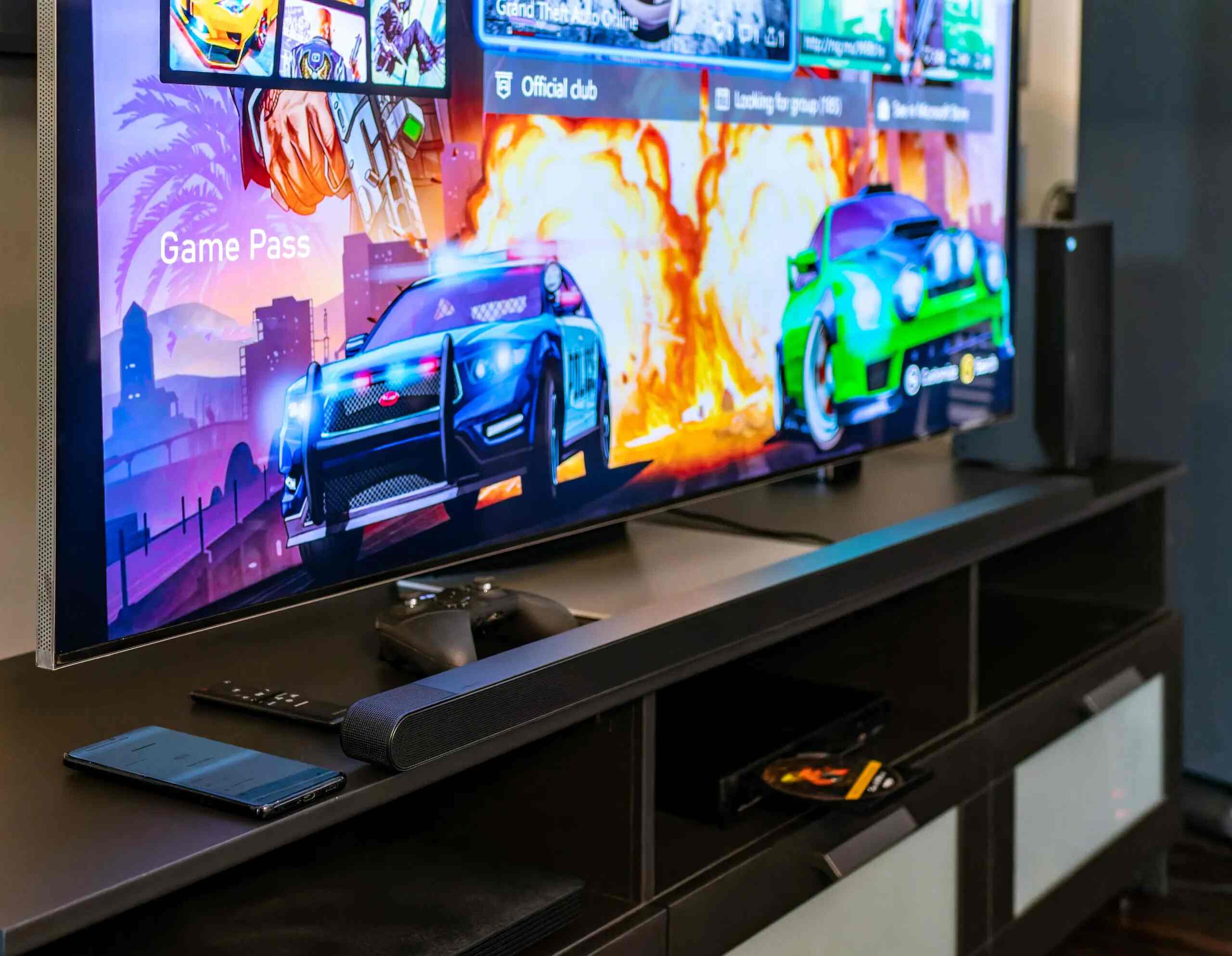Introduction
Calibrating your Samsung QLED TV is an essential step to ensure optimal picture and audio quality. By fine-tuning the settings, you can enhance your viewing experience and make the most of the advanced features offered by your QLED TV. Calibration involves adjusting various picture and audio parameters to achieve accurate colors, contrast, brightness, and audio clarity.
In this guide, we will walk you through the step-by-step process of calibrating your Samsung QLED TV. Whether you are a newbie or an experienced user, this guide will provide you with the necessary knowledge and tools to achieve the best possible picture and audio performance.
Before we delve into the calibration process, let’s understand the concept of calibration and why it is important for your Samsung QLED TV.
Calibration, in the context of television, refers to adjusting the settings of your TV to achieve accurate and consistent picture reproduction. Manufacturers typically ship TVs with default settings that are optimized for store displays or general viewing conditions. However, these settings may not be suitable for your specific home environment, resulting in inaccurate colors, overly bright or dim images, and subpar audio quality.
Calibrating your Samsung QLED TV allows you to tailor the settings to your viewing preferences and ensure that you are experiencing the content as intended by the creators. It helps to achieve true-to-life colors, optimal contrast, and accurate brightness levels, resulting in a more immersive and enjoyable viewing experience.
Now that we understand the importance of calibration, let’s gather the tools you will need for the calibration process.
What is Calibration?
Calibration is the process of adjusting the settings and parameters of your Samsung QLED TV to achieve accurate and optimal picture and audio quality. It involves fine-tuning various aspects such as color reproduction, contrast levels, brightness, and audio settings to ensure that the content you are viewing is displayed or heard exactly as intended by the creators.
When you purchase a new QLED TV, it comes with default factory settings that are designed to cater to a wide range of environments and preferences. However, these default settings might not be ideal for your specific viewing conditions, leading to discrepancies in color accuracy and overall picture quality.
Calibration is essential to bring out the true potential of your QLED TV and deliver a more immersive and realistic viewing experience. By adjusting the settings, you can achieve more accurate colors, better contrast, and improved detail reproduction. Additionally, calibrating the audio settings ensures that you enjoy clear and balanced sound quality.
Professional calibrators use specialized equipment to measure and modify the settings according to industry standards. However, as a regular user, you can still achieve noticeable improvements in picture and audio quality by following some basic calibration steps.
It is important to note that calibration is a personal preference, and what looks best to one viewer may not be the same for another. The ultimate goal of calibration is to achieve a result that is pleasing to your eyes and ears.
Factors such as room lighting, viewing distance, and personal preferences play a significant role in calibration. By taking these factors into account and making adjustments accordingly, you can enhance your viewing experience and make the most out of your Samsung QLED TV.
In the following sections, we will guide you through the calibration process for your Samsung QLED TV, step by step. Let’s start by gathering the tools you will need for the calibration.
Why Calibrate Your Samsung QLED TV?
Calibrating your Samsung QLED TV is an essential step in optimizing your viewing experience and ensuring that you are getting the best possible picture and audio quality. While the default factory settings may provide a decent image, calibration allows you to unlock the full potential of your QLED TV and take it to the next level.
Here are some compelling reasons why you should consider calibrating your Samsung QLED TV:
1. Accurate Color Reproduction: Calibrating your TV helps ensure that colors are reproduced accurately and faithfully. This means that the colors you see on your screen will closely match the original intent of the content creators, whether it’s a movie, TV show, or game. With accurate color reproduction, you can experience a more realistic and immersive viewing experience.
2. Optimal Contrast and Black Levels: Calibration allows you to fine-tune the contrast and black levels of your QLED TV, ensuring that you get the most detail in both dark and bright scenes. This means that you won’t miss out on any subtle details and that the images will have better depth and dimension.
3. Enhanced Detail and Sharpness: By calibrating your QLED TV, you can achieve better detail and sharpness in the images. This is especially important for watching high definition content or playing video games, where every small detail matters.
4. Consistent Picture Quality: Calibrating your TV ensures that the picture quality remains consistent across different sources and content. It eliminates variations in color accuracy, contrast, and brightness, so no matter what you’re watching, you can expect a consistent and pleasing visual experience.
5. Improved Viewing Experience: Ultimately, calibrating your Samsung QLED TV enhances your overall viewing experience. With accurate colors, optimal contrast, and better detail reproduction, you can fully immerse yourself in the content and enjoy it as intended by the creators.
6. Future-Proofing: Calibrating your TV not only optimizes the current performance but also future-proofs it. As technology advances and new content formats are introduced, having a properly calibrated TV ensures that you can take full advantage of the latest advancements and enjoy the best possible viewing experience.
Calibrating your Samsung QLED TV might seem like a daunting task, but it is worth the effort. The improvements in picture and audio quality can be substantial, transforming your entertainment experience and allowing you to appreciate the content in a whole new way.
Now that you understand the benefits of calibration, let’s move on to the next section, where we will discuss the tools you will need for the calibration process.
Tools You Will Need
Before you begin calibrating your Samsung QLED TV, it’s important to gather the necessary tools to ensure a smooth and successful calibration process. While professional calibrators use specialized equipment, as a regular user, you can achieve significant improvements by using the following tools:
- Calibration Disc: A calibration disc is a valuable tool that contains test patterns and color charts designed to help you adjust the settings of your TV. It provides step-by-step instructions and visual references to help you calibrate the picture and audio settings accurately. You can find calibration discs available for purchase or download free calibration software online.
- Colorimeter or Spectrophotometer: While not a requirement, a colorimeter or spectrophotometer can be used to measure and analyze the colors and brightness levels of your TV. These devices provide more accurate results and are commonly used by professional calibrators. However, they can be expensive, and most users can achieve satisfactory results without them.
- Light Meter: A light meter can be helpful to measure the ambient lighting conditions in your room. This information can be used to adjust the brightness and contrast settings of your QLED TV to compensate for the lighting environment. Alternatively, you can rely on your visual judgment if you don’t have access to a light meter.
- Remote Control: Ensure that you have the original remote control for your Samsung QLED TV. Some calibration adjustments may require access to specific settings which can only be done through the TV’s original remote control.
- Reference Content: It’s recommended to have access to reference content such as movies or TV shows that you are familiar with and have watched multiple times. These familiar scenes can help you compare the calibration adjustments and ensure that you are achieving the desired results.
- A Quiet and Controlled Environment: To accurately calibrate your QLED TV, it’s important to have a quiet and controlled environment. Avoid distractions, minimize ambient noise, and ensure that the room lighting conditions are consistent throughout the calibration process.
While these tools can greatly assist you in calibrating your Samsung QLED TV, they are not mandatory. You can still achieve significant improvements by following the calibration process using the built-in settings and a calibration disc.
Now that you have the necessary tools, it’s time to proceed to the next section, where we will guide you through the step-by-step process of preparing your TV for calibration.
Step 1: Prepare Your TV
Before you begin the calibration process for your Samsung QLED TV, it’s important to prepare your TV and ensure that you have the ideal setup for accurate calibration. This step will help create the optimal conditions for calibrating the picture and audio settings.
Follow these steps to prepare your TV for calibration:
- Choose an Appropriate Viewing Mode: Set your TV to the appropriate picture mode for calibration. Typically, the “Movie” or “Cinema” mode is recommended as it provides a more accurate starting point for adjustments. Avoid using modes like “Vivid” or “Dynamic” as they artificially enhance the image and may not represent the true intended colors.
- Disable Energy Saving Mode and Picture Enhancements: Turn off any energy-saving features or picture enhancements that may affect the accuracy of the calibration. These settings can alter the brightness, contrast, and other image parameters, making it difficult to achieve accurate calibration results.
- Disable Motion Smoothing: Disable any motion smoothing or motion blur reduction features, as they can introduce artifacts and inaccuracies in the image. These features are often enabled by default and can interfere with the calibration process.
- Set the Backlight Level: Adjust the backlight level of your QLED TV according to your room lighting conditions. If your viewing environment is bright, increase the backlight level, and if it’s dark, decrease it. This adjustment ensures a balanced level of brightness that is suitable for your specific room.
- Turn off Ambient Lighting: Dim or turn off any ambient lighting sources in your room that may affect the perception of contrast and color accuracy during the calibration. Eliminating external light sources will allow you to focus solely on the display settings of your TV.
- Warm Up Your TV: Allow your QLED TV to warm up for at least 30 minutes before starting the calibration process. This ensures that the display reaches an optimal operating temperature, which may affect the accuracy of the calibration results.
By following these steps, you will create an optimal environment for calibrating your Samsung QLED TV. These preparations help ensure that the calibration process is accurate and that you can achieve the best possible picture and audio quality from your TV.
Now that your TV is ready, let’s move on to the next step: adjusting the basic picture settings.
Step 2: Adjust the Basic Picture Settings
After preparing your Samsung QLED TV for calibration, the next step is to adjust the basic picture settings. These settings lay the foundation for achieving accurate colors, contrast, and brightness levels. Follow these steps to adjust the basic picture settings:
- Brightness: Start by adjusting the brightness setting. Display a black screen on your TV and gradually increase the brightness until you can see distinct shades of black without losing any detail. Be cautious not to make the image too bright, as it can result in loss of shadow detail.
- Contrast: Set the contrast level to a point where you can distinguish between the darkest and brightest elements on your screen. Find a balance that maintains detail in bright areas without overexposing them or compromising shadow detail.
- Color Temperature: Choose the appropriate color temperature setting based on your preference and viewing conditions. Most TVs offer presets such as “Cool,” “Standard,” and “Warm.” Use the one that looks the most natural to you, or select “Warm” for a warmer color tone that is often closer to a calibrated image.
- Sharpness: Adjust the sharpness setting to a level that maintains detail without introducing excessive edge enhancement or artifacts. Start by setting it to zero and then gradually increase it until you can see crisp details without noticeable artifacts.
- Color and Tint: Use the color and tint settings to achieve accurate color reproduction. Display a reference image with a variety of colors and adjust the color setting until the colors appear natural and lifelike. The tint setting allows you to adjust for any potential color imbalances in the image.
Remember, these settings are a starting point and can be further refined during the calibration process. Use your visual judgment and refer to reference content to ensure that the adjustments result in accurate colors and optimal picture quality.
Once you have adjusted the basic picture settings, you have laid the groundwork for more in-depth calibration. In the next step, we will focus on white balance calibration to achieve even more accurate colors.
Step 3: White Balance Calibration
White balance calibration is a crucial step in achieving accurate color reproduction on your Samsung QLED TV. It involves adjusting the red, green, and blue color channels to balance the grayscale and ensure that white tones are displayed correctly. Follow these steps to perform white balance calibration:
- Access the White Balance Settings: Navigate to the TV’s menu and locate the white balance settings. Depending on your model, these settings may be found under the “Picture” or “Settings” menu.
- Choose a Picture Mode: Select the picture mode that you have previously set as a starting point for calibration, such as “Movie” or “Cinema.” This ensures consistency and accurate comparison between calibration adjustments.
- Adjust the Gain Controls: Begin by adjusting the “Gain” controls for the red, green, and blue channels. The goal is to achieve an equal level of brightness for each channel in the grayscale. Start with the red channel and adjust its gain control until the grayscale shows a neutral gray without any noticeable color tints. Repeat the process for the green and blue channels.
- Calibrate the Bias Controls: After adjusting the gain controls, move on to the “Bias” controls for each color channel. The bias controls fine-tune the color balance at the darker end of the grayscale. Make small adjustments to the bias controls to ensure consistent color reproduction throughout the grayscale.
- Verify White Balance Accuracy: Display a reference image or use a calibration disc to verify the accuracy of the white balance calibration. The reference image should display neutral gray tones without any visible color shifts or tints. Use your visual judgment to make further adjustments if necessary.
Remember, white balance calibration requires patience and careful observation. Take your time to make incremental adjustments and evaluate the results before moving on to the next step.
Once you have completed the white balance calibration, you have made significant progress in achieving accurate colors on your Samsung QLED TV. In the next step, we will focus on adjusting the color settings to further refine the picture quality.
Step 4: Adjust the Color Settings
Adjusting the color settings of your Samsung QLED TV is an important step in achieving accurate and vibrant colors. This step allows you to fine-tune the color saturation, hue, and other color-related parameters. Follow these steps to adjust the color settings:
- Access the Color Settings: Navigate to the TV’s menu and locate the color settings. These settings might be found under the “Picture” or “Settings” menu, depending on your model.
- Saturation: Begin by adjusting the color saturation. This setting controls the intensity of the colors displayed on your TV. Find a balance where the colors appear vivid and natural without being overly saturated or washed out. Compare the image to a reference source or content that you are familiar with to ensure accurate color representation.
- Hue: Use the hue setting to adjust the overall color balance. Make small adjustments to find the sweet spot where the hues appear balanced and accurate. Pay attention to skin tones and other reference colors to ensure they look natural and lifelike.
- Color Temperature: Fine-tune the color temperature settings to achieve the desired color tone. If your TV has advanced options, you may be able to adjust the red, green, and blue color levels individually. Experiment with these settings to find the perfect balance that suits your preferences and viewing conditions.
- Color Gamut: Some Samsung QLED TVs allow you to choose a specific color gamut, such as “Standard” or “Wide Color.” If available, select the color gamut that provides the desired color accuracy and vibrancy. Experiment with different options and refer to reference images or content to assess the impact on color reproduction.
During the adjustment process, take breaks and revisit the settings to ensure your eyes do not become fatigued, which may affect your perception of color. Making small incremental adjustments and comparing with reference content will help you achieve more accurate and pleasing colors on your QLED TV.
Once you have adjusted the color settings, you are one step closer to achieving the best picture quality. In the next step, we will fine-tune the picture parameters to further optimize the image on your Samsung QLED TV.
Step 5: Fine-Tune the Picture Parameters
After adjusting the basic picture and color settings on your Samsung QLED TV, it’s time to fine-tune the picture parameters to optimize the image quality even further. These parameters include sharpness, motion settings, and local dimming. Follow these steps to fine-tune the picture parameters:
- Sharpness: Fine-tune the sharpness setting to enhance the detail without introducing artifacts. Make small adjustments and use high-resolution content or reference images to assess the impact on image clarity. Avoid setting the sharpness too high, as it can create artificial edge enhancement that reduces image quality.
- Motion Settings: Adjust the motion settings to reduce motion blur and increase clarity during fast-moving scenes. Different manufacturers may have different names for these settings, such as “Motion Interpolation” or “Motion Smoothing.” Experiment with the settings to find a balance that reduces motion blur without introducing a soap opera effect or other unwanted artifacts.
- Local Dimming: If your QLED TV has local dimming capabilities, adjust the local dimming settings to optimize contrast and black levels. Local dimming allows certain areas of the screen to dim or darken dynamically, improving contrast and deepening black levels. Experiment with the different local dimming modes available and choose the one that provides the best balance for your viewing conditions.
- Backlight: Fine-tune the backlight setting to achieve the desired level of brightness. Adjust it according to your room lighting conditions, personal preference, and content being viewed. Consider lowering the backlight setting for darker rooms or nighttime viewing to reduce eye strain and improve black levels.
- Gamma: If available, adjust the gamma setting to fine-tune the brightness levels across different shades of gray. The gamma setting affects the overall contrast and can have a significant impact on how the image displays shadows and mid-tones. Experiment with different gamma options to find the setting that best suits your preference and content type.
During the fine-tuning process, take breaks and periodically evaluate your adjustments by referring to reference content or performing visual comparisons. It’s important to strike a balance between image enhancements and maintaining a natural and accurate representation of the content.
By fine-tuning the picture parameters, you can further optimize the image quality to match your preferences and viewing conditions. In the next step, we will focus on adjusting the HDR settings to ensure an immersive HDR viewing experience.
Step 6: Adjust the HDR Settings
Adjusting the HDR (High Dynamic Range) settings on your Samsung QLED TV is vital to fully experience the enhanced contrast, brightness, and color capabilities of HDR content. Follow these steps to optimize the HDR settings:
- Enable HDR: Ensure that HDR is enabled on both your QLED TV and the content source. Most modern TVs automatically detect and enable HDR when compatible content is played.
- HDR Picture Mode: Select the appropriate HDR picture mode on your TV. Typically, there are specific modes, such as “HDR Standard” or “HDR Cinema,” designed to deliver the best HDR performance. Choose a mode that enhances the highlights, contrast, and color vibrancy of the HDR content.
- Brightness and Contrast: Adjust the brightness and contrast settings to achieve optimal HDR performance and make sure that the highlights and details are not overblown. Experiment with these settings to find the right balance and preserve detail in both dark and bright areas of the HDR image.
- Color Space: Set the color space to “Auto” or “Native” to enable the TV to automatically switch to the appropriate color gamut for HDR content. This ensures that the colors are accurately reproduced, as intended by the content creators.
- Dynamic Tone Mapping: Some QLED TVs have dynamic tone mapping capabilities, which adjust the HDR image on a scene-by-scene basis to maintain optimal brightness and contrast. Enable this feature if available to further enhance the HDR viewing experience.
While adjusting the HDR settings, it’s important to refer to well-mastered HDR content to evaluate the accuracy of the image. Look for a wide dynamic range, vibrant colors, and details in both dark and bright areas. Take your time to make incremental adjustments and compare the image to reference content or known HDR scenes.
By fine-tuning the HDR settings, you can ensure that your Samsung QLED TV displays HDR content with the best possible performance and visual impact.
In the next step, we will focus on calibrating the audio settings to complement the optimized picture quality.
Step 7: Calibrate the Audio
Calibrating the audio settings on your Samsung QLED TV is crucial to enhance your viewing experience with clear and immersive sound. Proper audio calibration ensures that dialogue, music, and sound effects are balanced, allowing you to fully enjoy the content. Follow these steps to calibrate the audio settings:
- Audio Mode: Select the appropriate audio mode that suits your content and preferences. For movies and TV shows, the “Movie” or “Cinema” mode is often recommended as it provides a balanced audio setting. However, you can experiment with other modes to find the one that suits your preferences.
- Volume Level: Set the volume level to a comfortable level that suits your listening preferences. Avoid setting the volume too low, as it may make it difficult to hear dialogue or subtle audio details. Similarly, avoid setting the volume too high, as it can cause distortion or discomfort.
- Audio Enhancements: Disable any audio enhancements or sound modes that may alter the original audio content. These enhancements can introduce artificial effects or modify the soundstage, affecting the accuracy of the audio reproduction.
- Equalizer: If your QLED TV has an equalizer, use it to fine-tune the audio frequencies according to your preference. You can adjust the bass, midrange, and treble levels to achieve the desired balance and personal audio preference.
- Surround Sound: If your TV supports surround sound, ensure that it is enabled to provide a more immersive audio experience. If you have a separate sound system or soundbar, make sure it is properly connected and calibrated to work with your QLED TV.
During the audio calibration process, it is recommended to play various types of content, such as movies, TV shows, and music, to assess the overall audio performance. Pay attention to dialogue clarity, audio effects, and the balance between different audio elements.
By calibrating the audio settings on your Samsung QLED TV, you can enhance the overall viewing experience and enjoy immersive sound that complements the optimized picture quality.
Congratulations! By following the seven steps outlined in this guide, you have successfully calibrated your Samsung QLED TV to achieve the best possible picture and audio quality. Remember that calibration is a personal preference, and you can always revisit and fine-tune the settings based on your viewing environment and preferences.
Conclusion
Calibrating your Samsung QLED TV is a crucial step to unlock its full potential and ensure the best possible picture and audio quality. By following the step-by-step process outlined in this guide, you have learned how to adjust the basic picture settings, perform white balance calibration, fine-tune the color settings, optimize the picture parameters, adjust the HDR settings, and calibrate the audio. These steps allow you to tailor the settings to your preferences and create an immersive viewing experience.
Whether you are a casual viewer or a home theater enthusiast, calibrating your QLED TV provides numerous benefits. Accurate colors, optimal contrast, and enhanced detail reproduction ensure that you can fully appreciate the content as intended by the creators. By taking the time to calibrate your TV, you can enjoy movies, TV shows, games, and other content with lifelike colors, vibrant visuals, and immersive sound.
Remember that calibration is a personal preference, and you can always experiment and make further adjustments based on your viewing environment and personal taste. It’s important to periodically revisit the settings and recalibrate if necessary, especially as your viewing conditions change or new content formats and technologies emerge.
Now that you have completed the calibration process, sit back, relax, and enjoy an incredible viewing experience on your Samsung QLED TV. Immerse yourself in the vibrant colors, stunning visuals, and immersive sound that bring your favorite movies, TV shows, and games to life!







